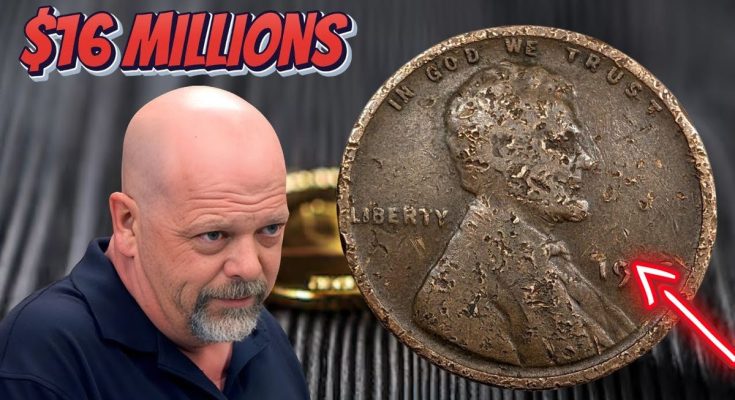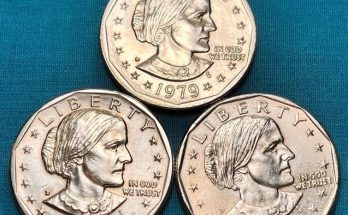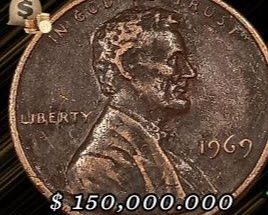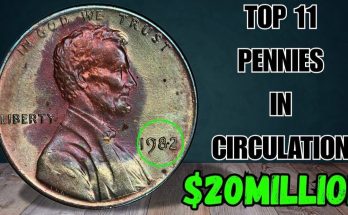“$17 Million Dollar Coins: Top 5 Super Rare Lincoln Pennies That Could Make You Rich!,” speak directly to the thrilling world of numismatics, specifically the hunt for rare and valuable U.S. Lincoln Cents. The photograph itself features a prominent coin expert, likely Rick Harrison of the popular show Pawn Stars, alongside a dramatically enlarged image of a highly corroded, yet recognizable, Lincoln Wheat Penny. The enormous $16 MILLIONS text (which the caption adjusts to $17 Million) and the red arrow pointing to the date emphasize the unbelievable wealth one small copper or steel coin could represent.
💰 The Allure of the Million-Dollar Penny
The sheer value attached to a single one-cent coin is what drives the massive public interest in rare pennies. While the exact figure of $17 million is likely an exaggeration for dramatic effect (the highest verified sale for a single penny is in the $1.7 million range), it highlights the top-tier of numismatic scarcity—the “error” coins that slipped through the U.S. Mint’s quality control.
The most famous—and likely the coin featured in the image due to its dark, coppery appearance and the ‘1943’ date—is the 1943 Copper/Bronze Lincoln Cent.
The Top 5 Rarest Lincoln Pennies for a Millionaire Payday:
The “Top 5” list typically focuses on coins created due to rare or unique minting errors, making them extraordinarily scarce:
-
The 1943 Copper/Bronze Cent: This is the most famous error coin in American numismatic history. In 1943, due to copper conservation efforts for World War II, the U.S. Mint switched to striking pennies on zinc-coated steel planchets. A few bronze planchets (the 1942 composition) were mistakenly struck with the 1943 dies. Fewer than 20 are known to exist across all mints (Philadelphia, Denver, and San Francisco), with the 1943-D (Denver) being the rarest, selling for up to $1.7 million.
-
The 1944 Steel Cent: The reverse of the 1943 error. In 1944, the Mint returned to a bronze composition. A small number of steel planchets left over from 1943 were accidentally struck with the 1944 dies. The value can reach hundreds of thousands of dollars, depending on the mint mark and condition.
-
The 1909-S VDB (San Francisco Mint): The very first year of the Lincoln Cent featured the designer Victor David Brenner’s initials (V.D.B.) prominently on the reverse. Public backlash led to the quick removal of the initials. Only 484,000 were minted with the ‘S’ mintmark and ‘VDB’ initials before the change, making this an iconic, highly desired, and valuable key-date coin.
-
The 1955 Doubled Die Obverse: This classic error coin features a dramatic, unmistakable doubling of the date and lettering, caused by a rotated die strike. It is one of the most visible and easily identifiable errors, with high-grade examples selling for tens of thousands of dollars.
-
The 1969-S Doubled Die Obverse: This error is considered much rarer than the 1955 version, with fewer than 50 known examples. It exhibits strong doubling on the date and the word LIBERTY. Authenticity is critical, but a verified specimen can easily command over $100,000.
🔍 How to Spot a Rare Lincoln Penny
The high value has led to a market rife with counterfeits, particularly for the 1943 Copper Cent. For genuine coin hunters, the steps are clear:
-
The Magnet Test (for 1943/1944): A genuine 1943 penny is steel and is magnetic. A copper 1943 error coin is not magnetic. Conversely, a genuine 1944 penny is copper and is not magnetic. A rare 1944 steel error is magnetic. This simple test is the first step in weeding out copper-plated steel cents.
-
Weight Test: A genuine steel 1943 cent weighs grams. A rare copper 1943 error cent weighs grams.
-
Magnification (for Doubled Dies): A coin collecting loupe or microscope is necessary to verify the clear, separated doubling on the date and lettering of the 1955 and 1969 errors.
-
Professional Certification: Any coin suspected of being a high-value error must be authenticated and graded by a reputable third-party service like PCGS or NGC.
This captivating image and caption serve as a powerful reminder that history, metallurgy, and human error can sometimes align to turn a single cent into a fortune, fueling the dreams of collectors everywhere who endlessly search their pocket change for that one, life-changing coin.



